
[331] Symphyotrichum novi-belgii, New York Aster
Symphyotrichum novae-angliae, New England Aster
Introduction
Symphyotrichum novi-belgii and Symphyotrichum novae-angliae are the two most common species of the group known as Michaelmas Daisies, widely cultivated in the UK as ornamental garden plants and seen outside gardens as escaped naturalized plants.They have the formal names New York Aster and New England Aster.
The genus Symphyotricum and ten other genera used to be included in the genus Aster. Many of their species still use the scientific designation Aster especially in horticultural contexts. As garden plants they are generally just called Michaelmas Daisies (or Michaelmas-daisies.)
Taxonomy
Kingdom – Plants
Division – Vascular Plants
Class – Angiosperms (Flowering Plants)
Order – Asterales
Family – Asteraceae
Subfamily – Asteroideae
Supertribe – Asterodae
Tribe – Astereae
Subtribe – Symphyoytrichinae
Genus – Symphyotrichum
Scientific Names – Symphyotrichum novi-belgii, Symphyotrichum novae-angliae
They may be known, especially in horticultural circumstances as Aster novi-belgii and Aster novae-angliae and they have many cultivars
Name
The word Aster, from the Latin for star, has been used for a very large genus from which Symphyotrichum has been split. It is used for the very large family Asteraceae.
Symphyo-trichum is Latinized from Ancient Greek roots, symphysis-trich, growing together and hair. (Named from part of the structure of some florets, not shared by most species in the genus. Once a scientific name is defined, it never gets changed just because it is wrong!)
The name Michaelmas Daisy comes from the idea that they bloom around 29 September, St. Michael’s Day. As I write this in early October, I can walk down a footpath which is lined with these plants in bloom for hundreds of yards. (Sorry, I am too old to say ‘hundreds of metres.’)
The species epithets novi-belgii and novae-angliae are Latinized forms of New Belgium and New England as places in the USA. They are, of course in genitive form. The Dutch colony New Netherland later became the State of New York (and the city of New York was originally New Amsterdam.)
Description
I start by noting that all species of Symphyotrichum are difficult to describe because parts of the plant structure, such as leaves, change through the year and between individual plants.
They all have inflorescences typical of Asters with many long ray florets from white to pink, blue or purple. Disk florets start from yellow to white and turn reddish or brown when mature.
The wild Symphyotrichum novi-belgii has almost white ray flowers while those of Symphyotrichum novae-angliae are light blue. But I will not attempt to differentiate the two species by flower colour because cultivated varieties have several different shades of flowers. (It is not helped by cameras that adjust white balance. In places I see large clumps of white Michaelmas Daisies next to blue Michaelmas daisies but the photographs of both species come out looking virtually identical.)
They have erect stems of from one to two metres height with many inflorescences near the top, often bunched together. They must spread easily because wherever I see one, I see them continue in a clump for some distance along the path.



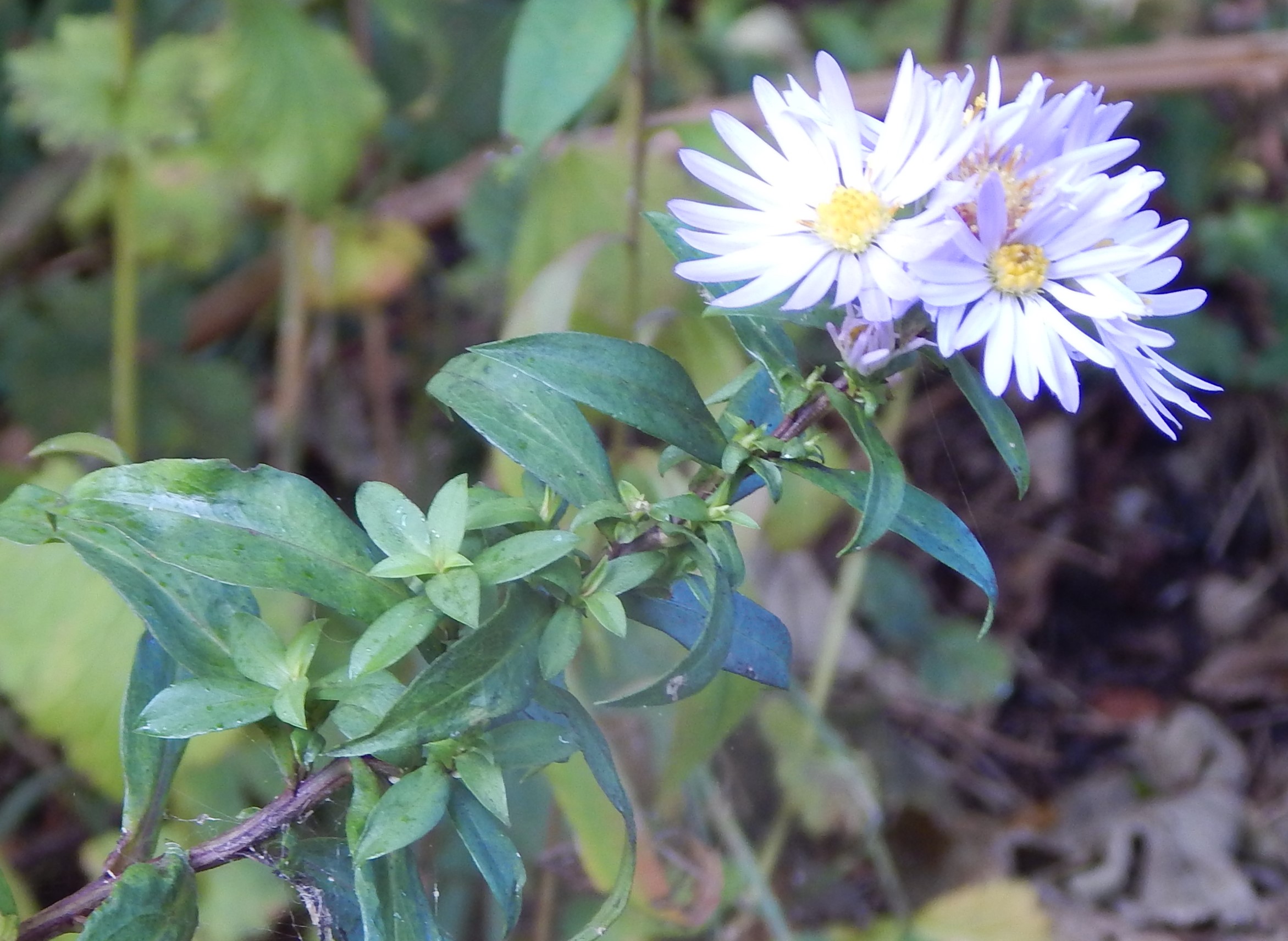
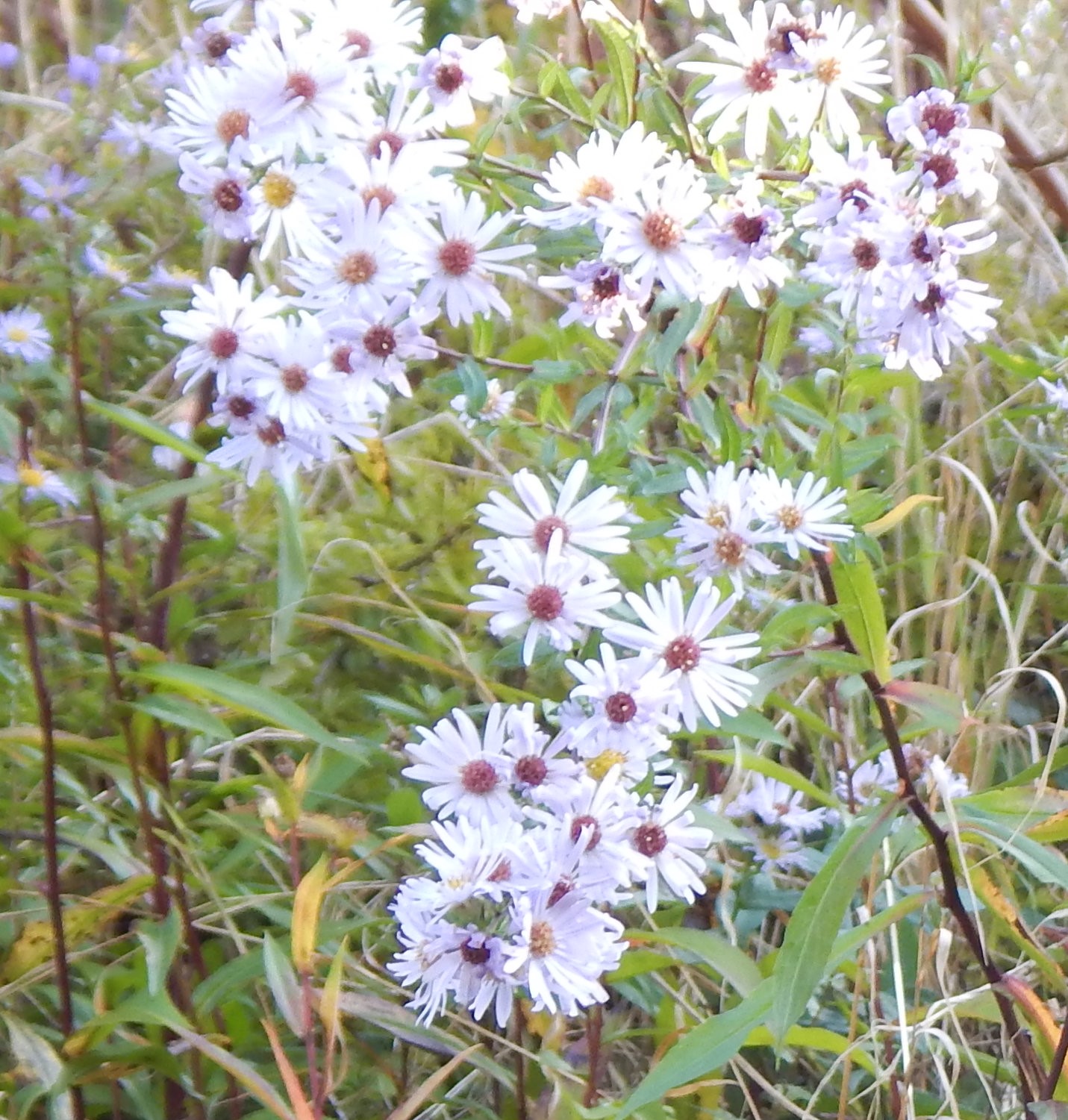

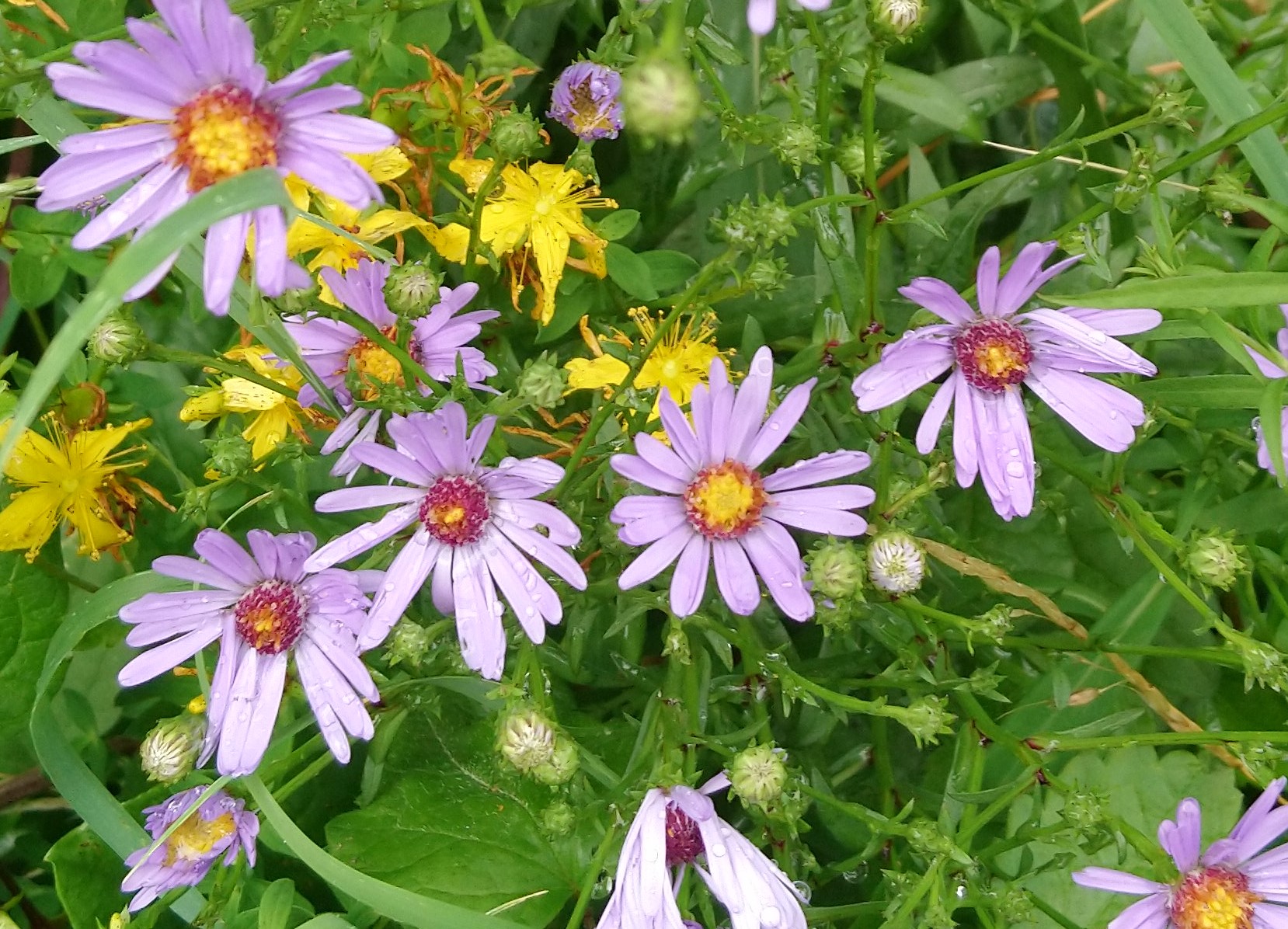








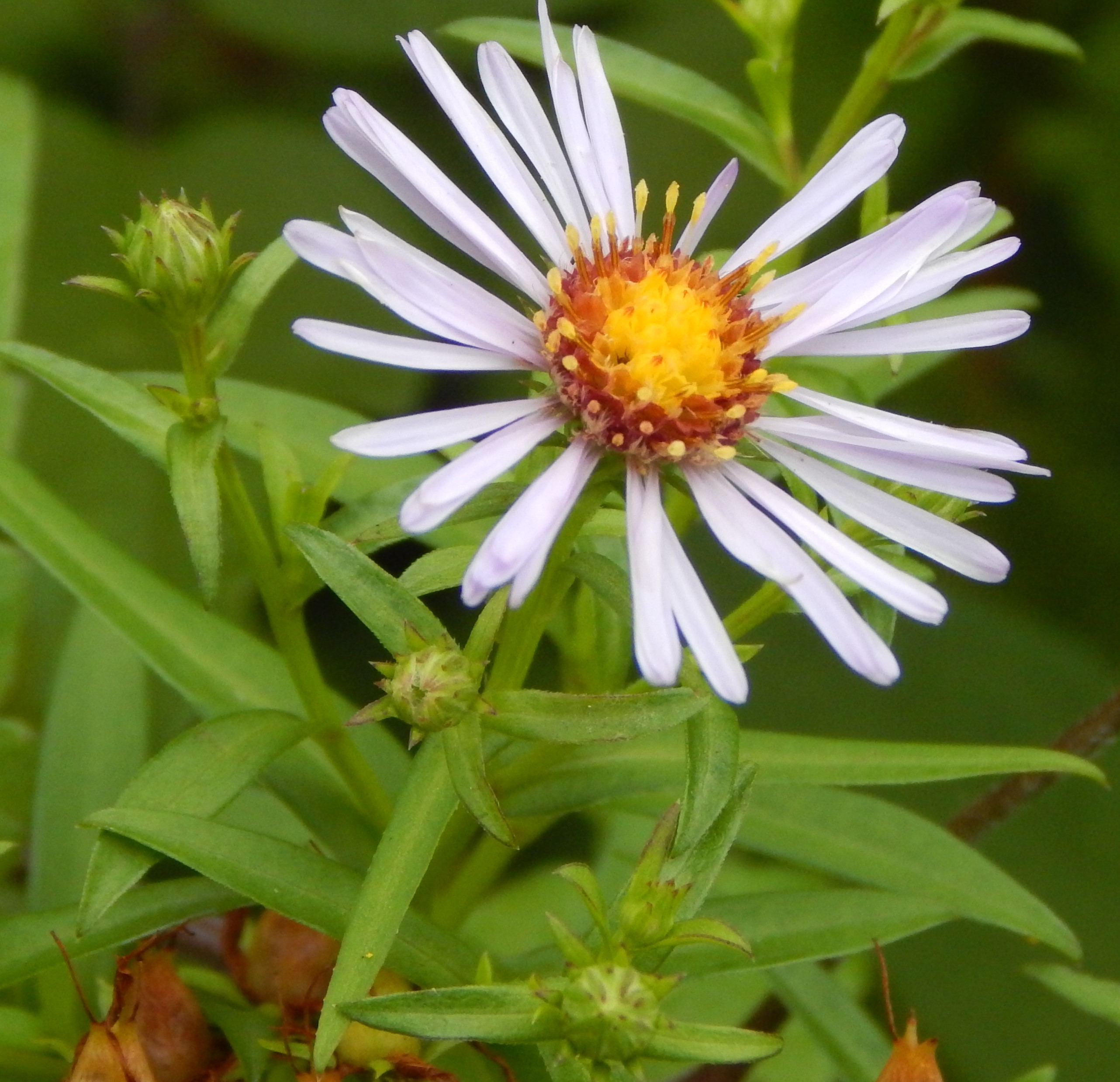
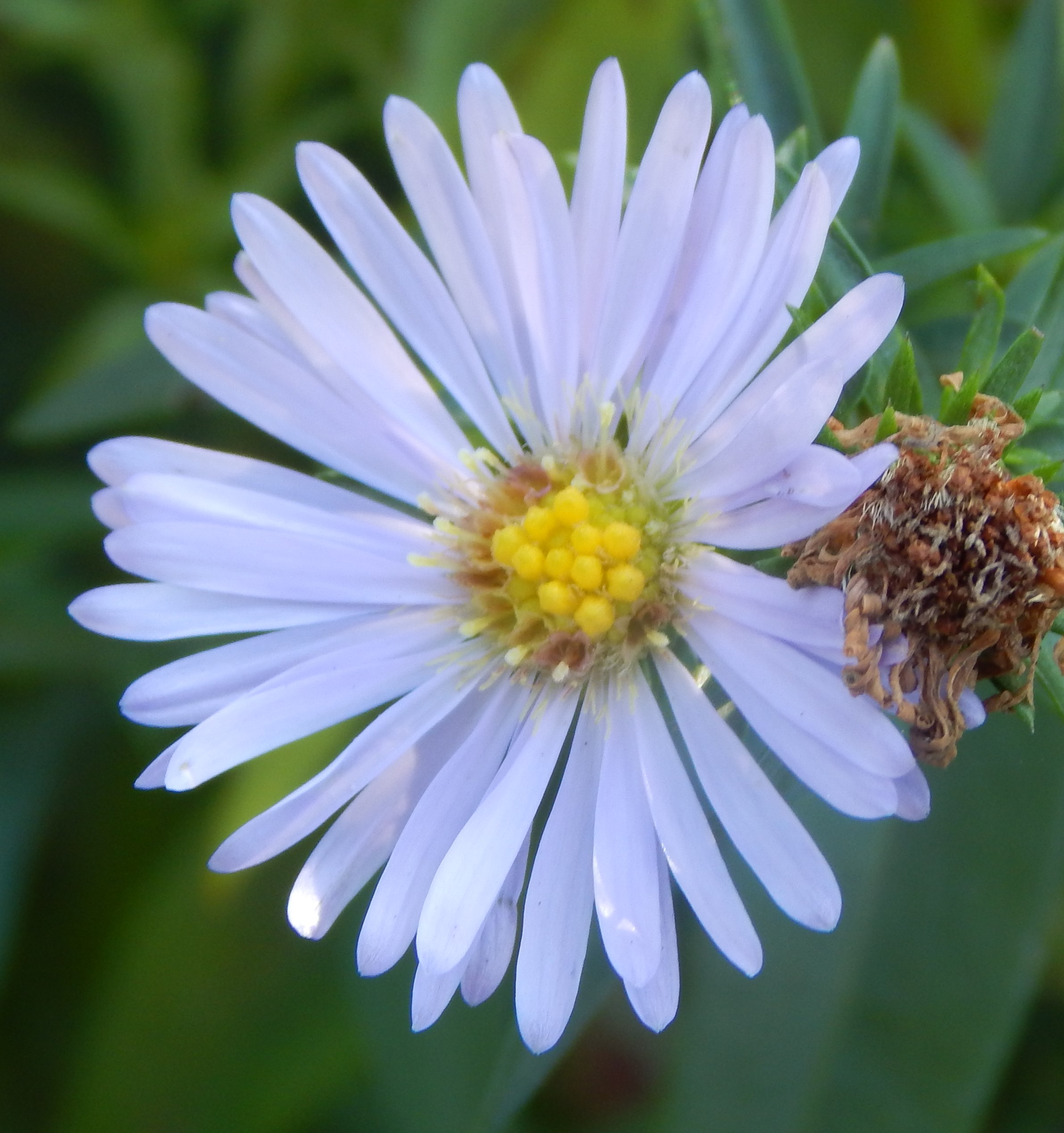


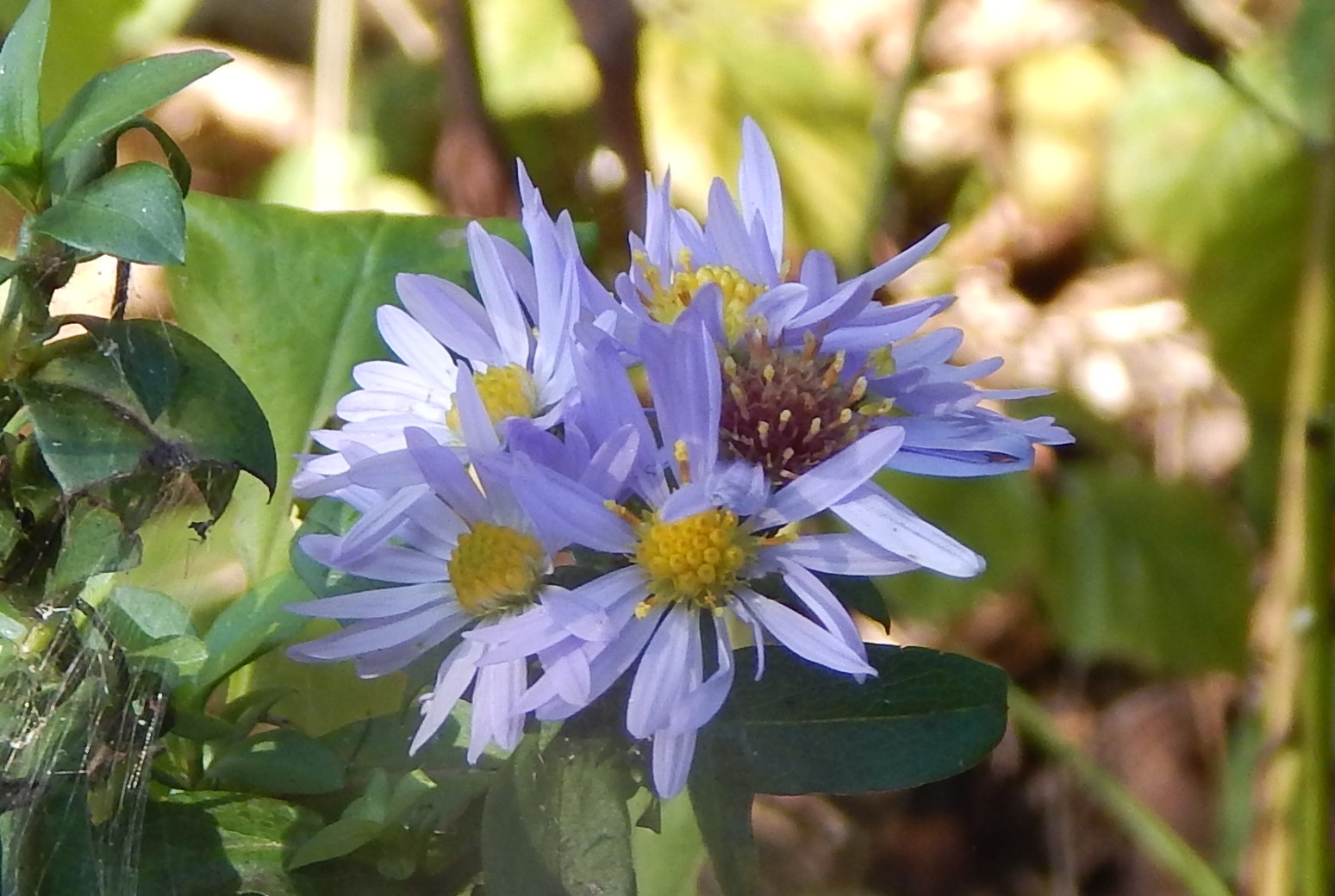
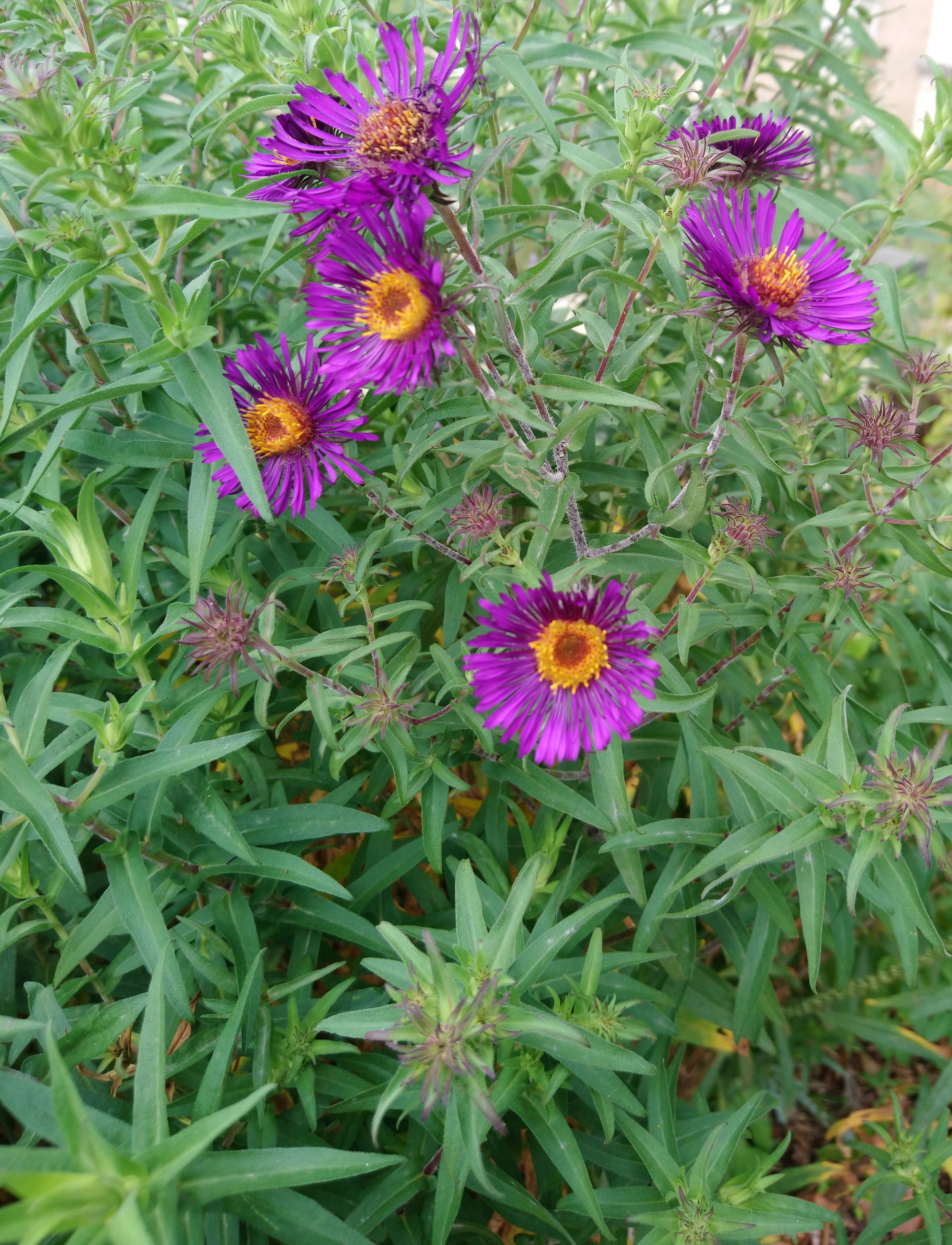
Habitat and use
Both species grow naturally over eastern Canada and north-eastern USA and tend to like wet areas.
In the UK they have been introduced as garden plants and have escaped to become naturalized in the wild. There are dozens of cultivars. Many of then are still called Aster.

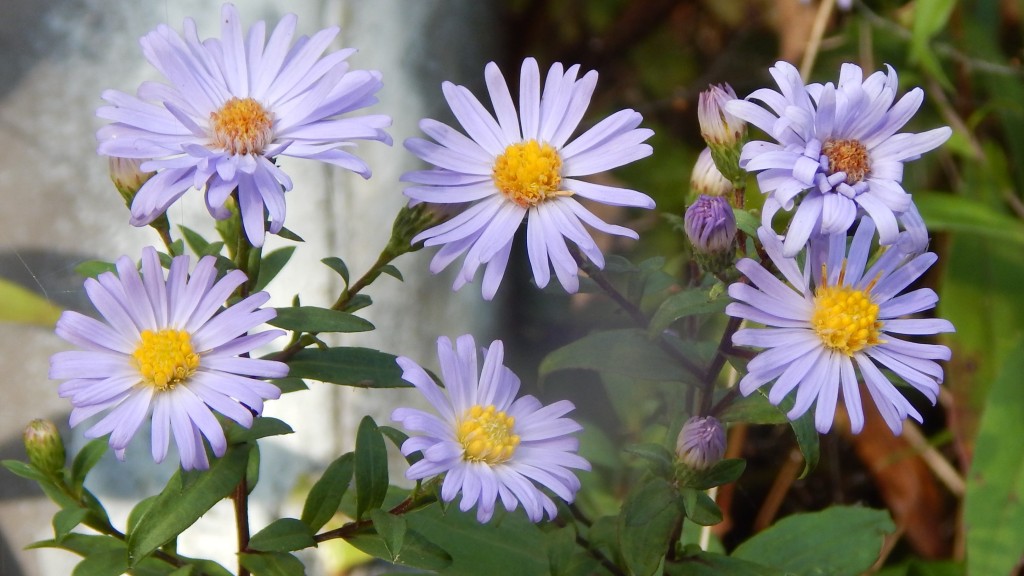
See also
I think by now you will be familiar with a few other garden plants that have escaped and spread easily.
Also, see [049] Daisy and [204] Ox-eye Daisy.
